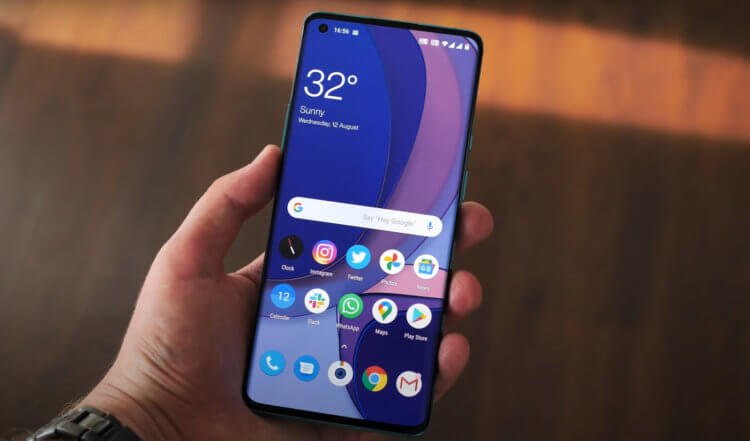We recently conducted a survey among our readers, the result of which showed that the majority of users Android would prefer a clean operating system to the shell. Allegedly, it is more pleasant, and faster, and safer, and it is updated much more regularly. Another thing is that most likely the overwhelming majority of those who read Android Insider.ru have never used stock Android, because more than 95% of our audience are owners of Samsung smartphones, Xiaomi, Huawei and other brands that fundamentally use the shell. Perhaps they know something?

Stock Android is inferior to shells in almost all respects
OnePlus purposefully uses its own shell, since pure Android simply cannot develop the potential of modern smartphones. According to the company's developers, technologies are developing so quickly today, and Google's operating system is so slow that they simply cannot keep up with each other. Therefore, the only way for the manufacturer to achieve at least some kind of correspondence between the hardware and software stuffing of branded devices is to use their own shell.
Which is better: shell or stock Android

OxygenOS is perfect for large smartphones
As the screen size increases, so does the unused space. We wanted to make the most of it while maintaining the usability of the interface. We ran a series of tests with our users to determine the best layout format. This testing resulted in a new layout format for OxygenOS 11. We also know that the clean version Android is not suitable for one-handed use on a large display, so we decided to adapt the OS ourselves. We analyzed how people use their phones, studied anthropometric data and developed an interface suitable for easy one-handed use, explained OnePlus.
In fact, OnePlus is right. Stock Android – for all its simplicity and unobtrusiveness, it does not meet the requirements of modern smartphones. Of course, Google is trying to improve it, but only to the extent that Google Pixel devices need it. All the rest are forced to be content with the minimum they give. Therefore, there is nothing surprising in the fact that manufacturers are doing the work for Google, expanding the functional range of the operating system with their shells.
Disadvantages of clean Android

Pure Android lacks a lot of functions that are in all shells
Here are just the main drawbacks of stock Android that hinder usability:
- No one-handed mode
- Inconvenient interface layout, not suitable for large displays
- Lack of the function of creating a swipeable screenshot
- Ban on recording telephone conversations
- Insufficiently efficient power saving mode
And that's just what came to mind at the moment. But if you dig a little deeper, it turns out that the stock Android has much more objective shortcomings. Moreover, neither regular updates, nor the imaginary speed of work, which in fact turns out to be even less than that of shells from advanced manufacturers like OnePlus, can neutralize them. The only advantage of the stock Android is the nostalgia of users who still remember the times when the shells were slow and clumsy, and a clean OS somehow pulled out the tasks assigned to it.
